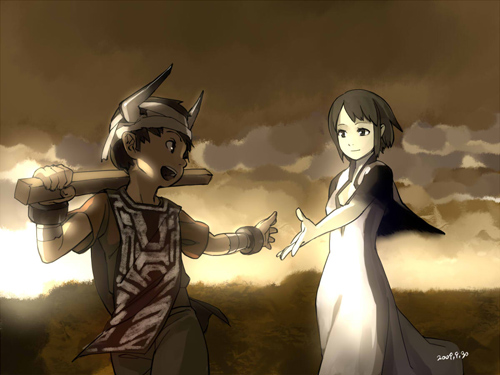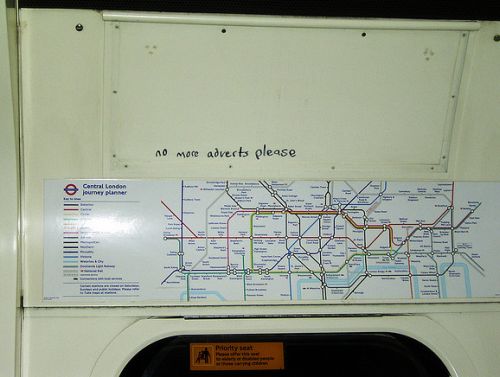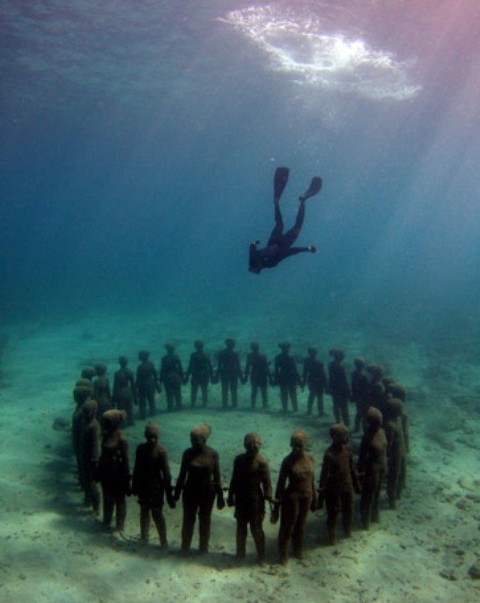This Week’s Puzzle
I have a Tumblr on which I post daily things to draw, called Now Draw This. I really want to make sure I credit the relevant artist when I post a piece of artwork. (I should do that with the photos too, but for various reasons that’s not as important to me).
TinEye is an awesome reverse image search engine, which in the past has helped me track down artwork even when the version I had turned out to have had the colour palette significantly edited. Pretty clever.
The problem is, this site posted the above image (of Ico and Yorda from the game Ico), and neither TinEye nor wily Googling is helping me track down the original artist.
Can you find out who created the above image originally?
Video
Technology expands the range of things we can do. As a society we try to keep up by generating some kind of idea of what we should do. For example, mobile phones enabled us to use ostentatious ringtones. For a while they were everywhere. Now, it seems we’ve collectively decided that’s not such a good idea.
So here’s something I hadn’t even considered: what if you could collect some kind of real-time usually-invisible data about yourself, and then manifest it with a clear physical signal? Would that ever be a good idea?
Link
Michael Lewis writes long articles on complex but important topics, that are nonetheless incredibly engaging, thus creating pretty much optimal long-form journalistic pieces. I highly recommend that you make time for his article Beware of Greeks Bearing Bonds (which I thought I’d linked to before but can’t find in my records), and if you like that then you should also read When Irish Eyes Are Crying.
Quote
Joe Cornish, director of Attack the Block, interviewed by Little White Lies:
If you look at a lot of the digital creatures in Harry Potter, you couldn’t go home and sketch them – you’d need a draughtsman’s degree. […] The charm is to go home and feel that it’s possible to figure out how they did it. When I was a kid, I’d go and see Ghostbusters and spend the next day trying to draw the Stay Puft Marshmallow Man, or trying to get the logo right. They had a graphic simplicity that was much more infectious and warm and authored than a lot of the stuff now.”
I had the same childhood experience, and I think it’s a really fun rubric. Attack the Block‘s creature design succeeded in exactly that way.
Last Week’s Puzzle
Last week I asked what the purpose was of this insect-eye mirror I saw on the ceiling in a bank in Vienna, but nobody hazarded a guess.
You can tell from the shadow that there’s a bright spotlight pointed at the mirror, so my hypothesis was that it was some kind of way to generate a bright, ambient light throughout the room. But it seems like overkill / overdesign if that’s the goal. And why would you want to have a diffuse, shadowless light that badly anyway? I like to imagine, completely baselessly, that there’s a local superstition about some kind of money-stealing creature that inhabits shadows. But if you can think of something more plausible, do let me know.


